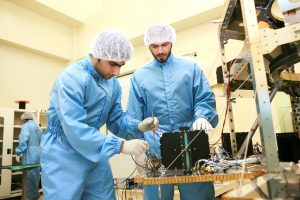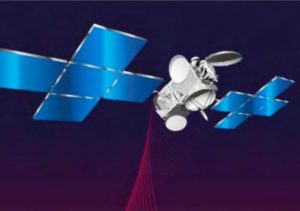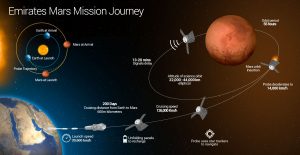In the past, we have looked to nations such as Russia and the United States for our inspiration in space. For decades, these countries have dominated the space sector. However, new national players are emerging, proving that space is no longer the domain of the richest and most powerful nations. SpaceWatch Middle East contributing editor Helen Jameson, gives her take on Satellite Sovereignty in emerging countries.

Space has, for many years, been thought of as the preserve of the very richest and most powerful nations in the world. Russia and the United States are synonymous with space and they are regarded as the pioneers of the space age, and rightly so. But today, and in a world where space has become more affordable and more accessible, there are other nations that are trying their hand at national space programmes.
So, what does space offer to a country and why is it an important step for single nations to take?
Space offers so much. Firstly, it gives any country the opportunity to diversify and create a new industry from the ground up and the opportunity to make a big impact on their society. By diversifying and creating a new industry, it gives a country a new area of specialism. To flourish, a new generation of engineers must be nurtured, creating higher education opportunity, the development of new educational programmes and then job creation.
A national satellite or space industry brings with it some enormous benefits. Not only does it stimulate manufacturing in both developed and developing countries, but it creates assets that really do become indispensable and that can be used for a multitude of applications – some of which are truly life-changing. Satellites, particularly small satellites, are gaining huge traction in developing regions of the world where they are being used for Earth Observation that can assist with agriculture, environmental monitoring, disaster relief and military applications to mention just a few. Satellites can also deliver precious communications for healthcare information, banking, education, Internet access, access to governmental programmes – they are literally opening doors to better socio-economic futures. A satellite industry that is independent opens doors for the whole nation, creating a new workforce and expanding knowledge.
In a July 2016 report on Emerging Space Programmes (ESPs), Euroconsult found that, in the last 20 years, 24 countries have launched 69 satellites, including those countries launching their inaugural satellites. 2015 saw a record-breaking year with 9 first-time satellites launched. By 2025, the analyst firm predicts that 47 countries will come forward as emerging space programmes, committing to their first investment in space.
Middle East: Big Space Ambitions
The Middle East region is already flexing its space muscles. Development of the Qatar and UAE space industries is well underway and has been for some time. The emergence of operators Yahsat and Es’hailSat as well as serious national space programmes such as those that have been born through the Mohammed Bin Rashid Space Centre (MBRSC), demonstrate the Middle East’s commitment to the development of the space industry in the region.
Qatar is firmly placing itself on the space map through the development of its satellite industry. The country’s first commercially run, national satellite operator, Es’hailSat, is playing a crucial role in Qatar’s 2030 Vision which is focused around four guiding principles that aim to create a sustainable economy and to advance the standard of living of its people. Those four principles are: human development, social development, economic development and environmental development. Both public and private sectors are engaged in the fulfilment of the Vision. Es’hailSat is a key part of the diversification of the Qatari economy.
Established in 2010 and headquartered in Doha, the company offers broadcasting and communications solutions to broadcasters, businesses and governments in MENA with an aim to becoming a world class satellite operator whilst serving the strategic interests of key Qatari stakeholders.

The first Es’hailSat satellite, Es’hail-1 was launched on 30th August 2013. The next addition to the Qatari fleet will be Es’hail-2 which is under construction by Mitsubishi Electric Company (MELCO). Slated for launch later this year, it will be a high‐performance satellite that will be positioned at the 26 degrees East hotspot position for TV broadcasting, significantly adding to the company’s ability to provide DTH television content across the Middle East and North Africa.
Es’hail‐2 will have Ku‐band and Ka‐band capabilities and will provide TV distribution and government services to strategic stakeholders and commercial customers who value broadcasting and communications independence, interference resilience, quality of service and wide geographical coverage. Moreover, Es’hail‐2 will provide the first Radio Amateur Satellite Corporation (AMSAT) geostationary communication capability that connects users across the visible globe in one single hop and in real‐time. It will allow also the AMSAT community to validate and demonstrate their DVB standard.
To operate the spacecraft and deliver its services, Es’hailSat has built a new teleport facility at a dedicated site, just north of Doha. The new site will feature TT&C capability and management for the satellite fleet as well as a range of teleport services.
Al Jazeera, Al Rafidain and beIN SPORTS and a growing number of channels are already using Es’hail‐1 capacity for high definition broadcasting of their premium content.
Es’hailSat is also promoting the diversification of careers in Qatar by investing in its people and introducing them to space careers. The company has placed strong emphasis on the development of its staff and on its school’s programme which aims to engage young people in space and satellite communications and the importance of satellite in daily life.
The UAE is another Middle Eastern nation that is looking to space as a critical part of the future of the nation. Economically, the space sector in the UAE is an important driver. UAE’s investments in space technologies has already exceeded AED 20 billion (USD 5.4 billion), primarily supported by Emirati institutions and companies that include Mohammed Bin Rashid Space Centre, Thuraya and Yahsat.
The Mohammed Bin Rashid Space Centre (MBRSC) is a Dubai Government entity that was created and established in 2015. The establishment of the Centre came as a natural progression of the UAE’s ambition to achieve certain milestones in space technology. The Centre works on research projects and space science studies in its quest to develop the sector and build national academic skills. It also represents the main conduit to realise the Government’s strategic initiatives to inspire scientific innovation, technological advancement, and advancing sustainable development in Dubai and the wider UAE.
The Centre is comprised of a team of leading UAE engineers and experts all working towards positioning the UAE as an internationally renowned leader within the field of science and technology. In 2009, MBRSC launched “DubaiSat-1” into space, the first remote sensing satellite which signalled the start of the UAE’s thrust into the industry. In 2013, the second satellite “DubaiSat-2” was launched, while work is underway to launch the third satellite “KhalifaSat” in 2018, which is being built by 100% Emirati engineering and expertise in the UAE.

Among the most prominent tasks, the Centre oversees the design, implementation, and supervision of all launch phases for the “Hope” to explore Mars. The Centre is also responsible for all projects related to satellite technology and applications, specialised projects, and advanced technical projects assigned to stakeholders. Additionally, the Centre provides space imaging and earth station services and support to other satellite services.
The Emirates Mars Mission (EMM) will be the first ever Arab Islamic mission to another planet. Aptly named the ‘Hope’ by the leadership of the UAE, and after receiving general public consensus on the name, the mission represents the determination, desire and aspiration of millions of young Arabs looking to make their mark globally and join other world organisations in exploring Space.
Recent developments in exploring Mars have positively intensified and the UAE is looking to play a pivotal role in providing answers to the planet which will give the world the first picture of the Martian atmosphere. Hope will carry out detailed research on current and ancient climate on Mars, and advance human knowledge about the atmospheric conditions and changes.
The Hope Probe will be launched in July 2020, and the orbiter will arrive on Mars in 2021, to coincide with the 50th anniversary of the founding of the UAE. Over 1000 gigabytes of new data about Mars will be sent back to Earth about Mars through the probe. The mission team comprises of more than 90 Emiratis, with contribution from over 200 personnel from U.S. partnership institutions.
The EMM is set to be the first probe to study Martian climate through the daily and seasonal cycles. It will explore the connection between the upper and lower atmosphere, study the events in the lower atmosphere such as changes in temperature and dust storms, and how they affect the upper atmosphere in the following days or weeks. One key question that the probe will work towards answering is why Mars is losing its atmosphere to space by tracking the behaviour of hydrogen and oxygen, which are the building blocks of water. With the discovery of periodical water on the surface of the Red Planet, Hope will be able to answer if the source of the Martian water is from the atmosphere. This research will create the first global image of weather on Mars during the days, weeks, months, and years, adding a new dimension to human knowledge on how the red planet’s atmosphere really works.
The Emirates Mars Mission is the UAE’s anchor project that will create its positioning within the space industry. Through the EMM, and other space projects, the UAE will build valuable Emirati human capacity, technical skills and the all-important industrial know-how with the aim to become a regional leader in space technology, and a serious competitor in space exploration worldwide. The UAE’s aim is to be one of the leading countries in the field by 2021 and that all its space projects will be led by Emiratis, making the current national team and Emirati newcomers tremendously proud of these landmark achievements.
To be continued in part two, with a focus on Africa.
Original published at: http://spacewatchme.com/2017/01/satellite-sovereignty-part-1/
 SpaceWatch.Global An independent perspective on space
SpaceWatch.Global An independent perspective on space

